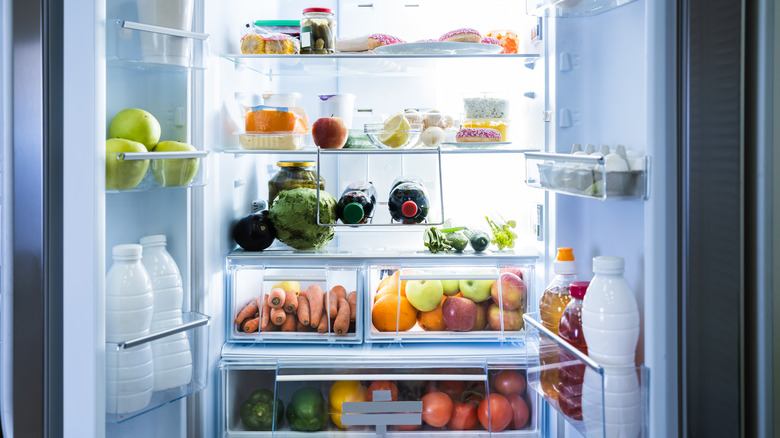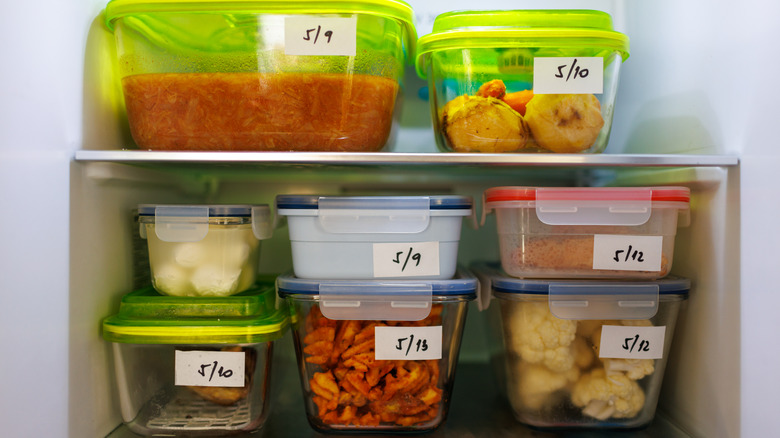The Rotation Trick That Will Ensure Your Food Stays Fresh
No one likes to waste food, whether it's a bag of questionable or rotting produce from the depths of the crisper drawer, milk that's curdled, leftovers that got left a little too long, or even staples that have long expired from the recesses of your pantry. It's also a big problem, with food waste accounting for 30% to 40% of the entire food supply in the US, according to the USDA, and globally, according to Scientific American.
We've all had to toss out food occasionally, especially when they show obvious signs that they should be thrown out before eating. However, if you're doing this on a regular basis, you need a new and better storage system. Enter the rotation trick that will help your food stay fresh. It takes just slightly more effort than what you are doing now but will help cut down on unnecessary food waste, which in turn helps conserve energy and resources, reduce greenhouse gas emissions, and save you money.
Rotate your food to keep them fresh
All you have to do is to rotate your food so that any newly purchased food goes behind older food, ideally arranged by type. That way, you will see and grab the older items first, and hopefully consume them before they go bad. If you simply shove food into your fridge or pantry as you get them, then you may never get around to the old stuff until it's too late. It's a system that restaurants and supermarkets use to manage their perishables, called FIFO, "first in first out." It's also a system that needs to be done continually. Every time you get new food, rotate the old stuff to the front.
There are other ways you can cut down on food waste, like using clear containers for your pantry storage or for storing food in the fridge. Clear containers help you keep track of how much of a particular item you already have, so you can avoid buying more of something you don't need, especially if you can't use it all before it spoils. Square or rectangular containers that are stackable will also help you make the most of your storage space and make it easier to rotate, and waste less, food. Just be sure to add a label with a use-by or purchased date to keep track.

